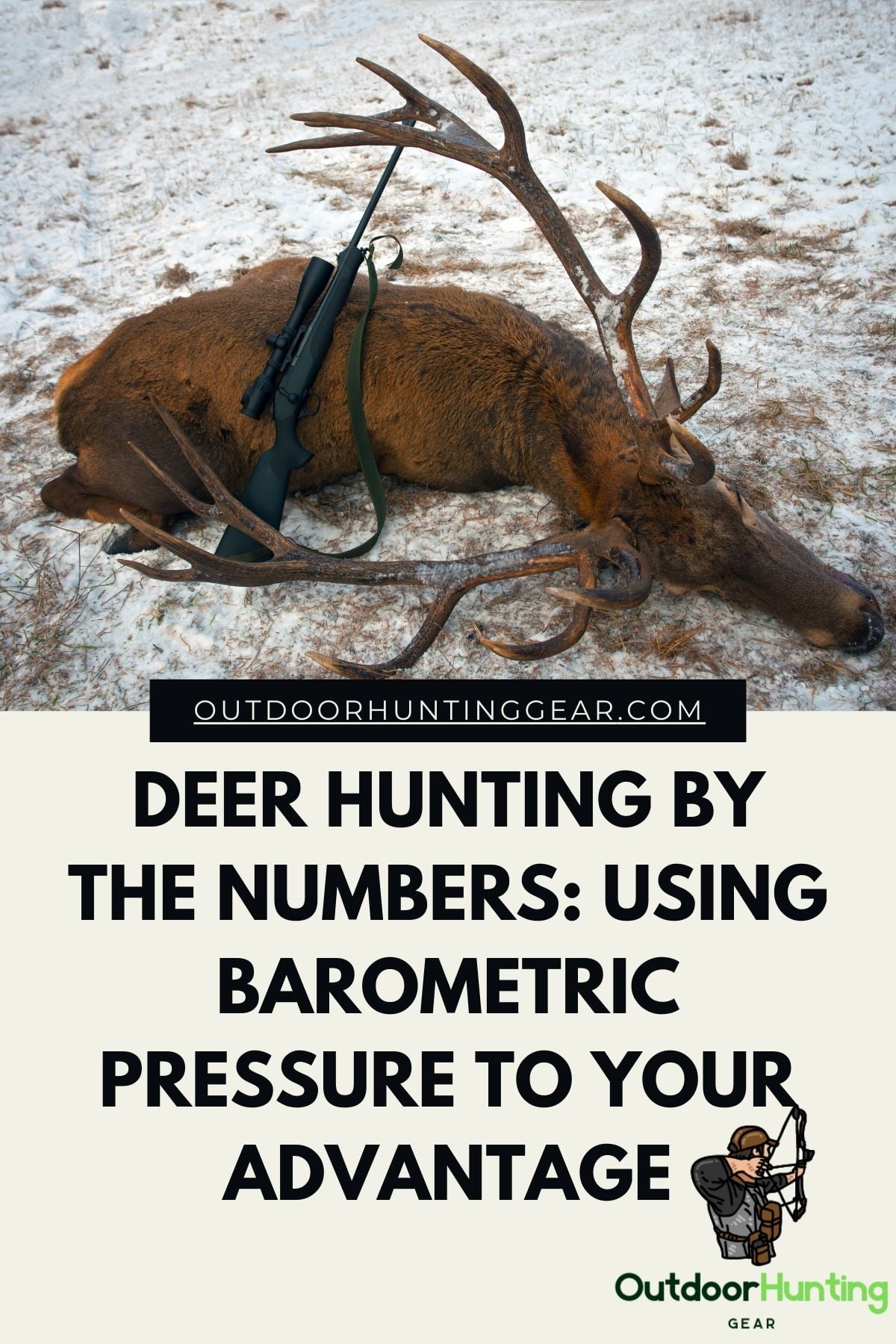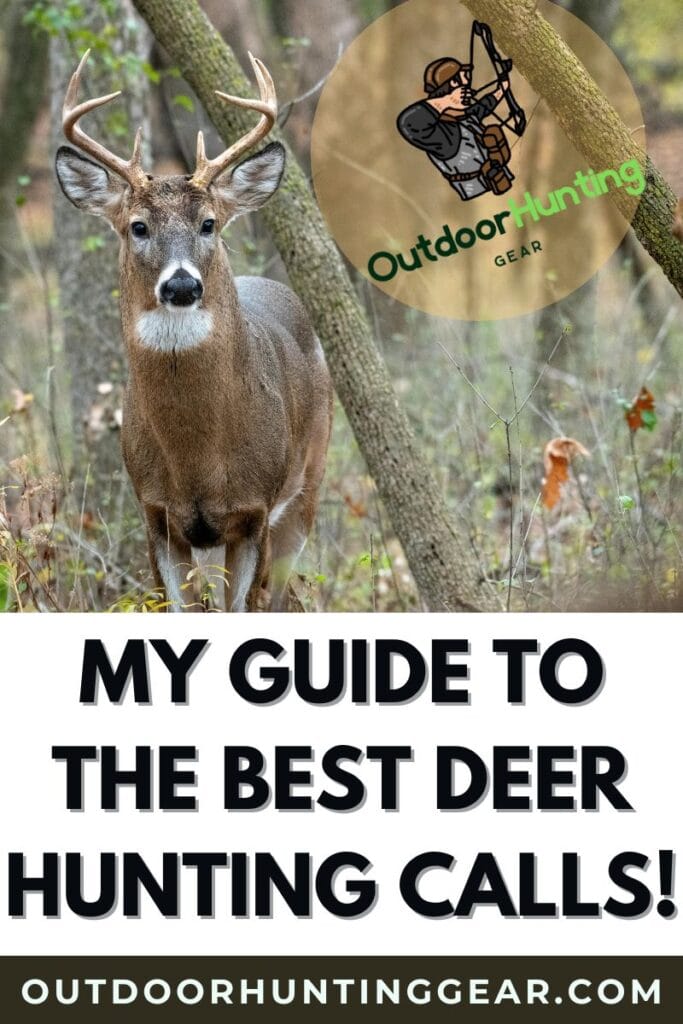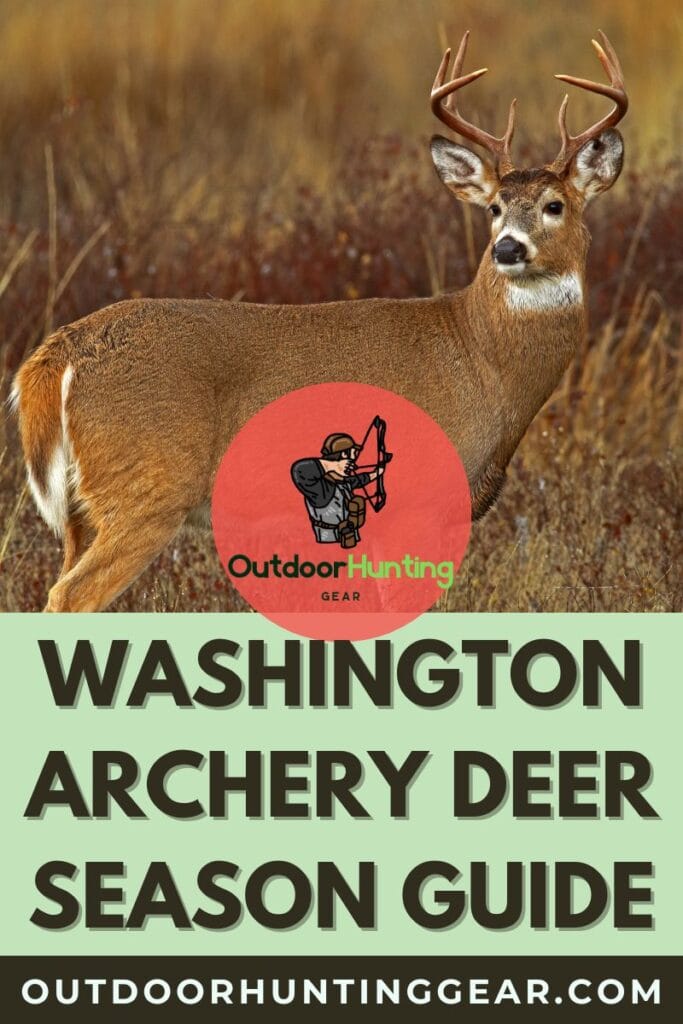Ultimate Guide to the Best Barometric Pressure for Deer Hunting (No Experience Needed!)
Ever wondered why that big buck seems to vanish when the weather changes? Understanding barometric pressure can be a game-changer for deer hunting. Learn how to use it to your advantage and bag that trophy!
Discover the best barometric pressure for deer hunting. Learn how to use a barometer to maximize your chances of a trophy buck. Get expert tips and tricks for timing your hunt based on pressure readings.
- Ultimate Guide to the Best Barometric Pressure for Deer Hunting (No Experience Needed!)
- Secret to Successful Deer Hunting: Barometric Pressure
- Best Barometric Pressure for Deer Hunting Success
- What is Barometric Pressure?
- Why Does Barometric Pressure Matter for Deer Hunting?
- Deer Movement and Ideal Barometric Pressure for Hunting
- Beyond the Barometric Pressure Numbers: Other Factors Deer Hunters Should Consider
- How to Make the Best Barometric Pressure Deer Hunting Strategy
- Best Barometric Pressure for Deer Hunting – Frequently Asked Questions (FAQs)
- Beyond Barometric Pressure: Deer Scouting and Woodsmanship
- Putting It All Together: A Week-Long Deer Hunting Example
- Gear Up for Success with the Best Hunting Equipment!
Secret to Successful Deer Hunting: Barometric Pressure
Ever wondered why some days seem to be better for deer hunting than others? It’s not just luck or coincidence; it’s often due to barometric pressure. This often-overlooked factor can significantly influence deer behavior and movement patterns.
In this post, we’ll delve into the science behind barometric pressure and how it affects deer. You’ll learn the following:
- The ideal barometric pressure ranges for successful deer hunting
- How to use a barometer to predict deer activity
- Tips for adapting your hunting strategy based on pressure changes
By understanding the impact of barometric pressure, you can make more informed decisions and increase your chances of a successful hunt. So, grab your barometer and let’s explore the science behind this hunting secret.
Best Barometric Pressure for Deer Hunting Success
For many hunters, understanding the link between air pressure and deer activity is a mystery. Fear not, fellow outdoorsman! This guide will unveil the secrets of barometric pressure, how it influences deer behavior, and ultimately, how to leverage this knowledge to maximize your hunting success.
What is Barometric Pressure?
Imagine Earth’s atmosphere as a giant blanket of air pressing down on everything. Barometric pressure is the measurement of this weight, influenced by air density and temperature. High pressure indicates denser, heavier air, while low pressure signifies lighter air.
Throughout the day, and especially during weather changes, barometric pressure fluctuates. Hunters typically measure it in inches of mercury (inHg).
Why Does Barometric Pressure Matter for Deer Hunting?
Deer, like many animals, are incredibly sensitive to changes in barometric pressure. Their inner ear has a built-in pressure gauge that helps them navigate and detect upcoming weather shifts. When the pressure fluctuates rapidly, it can disorient them and affect their behavior.
Deer Movement and Ideal Barometric Pressure for Hunting
Here’s the golden nugget for hunters: deer tend to be more active during periods of stable or slowly changing barometric pressure.
High Pressure (30.00 inHg and above)
Stable high pressure is generally considered prime hunting time. Deer feel comfortable and predictable, increasing their feeding and movement during daylight hours. This is a great time to set up near food sources or travel corridors.
Slowly Rising Pressure (After a Low Pressure System)
As high pressure approaches and replaces a low-pressure system, deer activity can pick up significantly. This is because the worst of the disruptive weather has passed, and deer are eager to resume their routines.
Slowly Falling Pressure (Before a Low Pressure System)
While deer might still be active before a low-pressure system arrives, their movement can become more erratic and unpredictable. They may become more cautious and nocturnal, making them a tougher target.
Rapid Pressure Changes
This is generally not the best time for hunting. Rapid drops or spikes in pressure can disorient deer, making them less likely to follow predictable patterns.
Beyond the Barometric Pressure Numbers: Other Factors Deer Hunters Should Consider
While barometric pressure is a powerful tool, it’s not the only factor influencing deer movement.
Here are some additional considerations:
Wind Direction
Deer rely heavily on their sense of smell. Understanding wind direction can help you position yourself downwind from potential deer paths.
Moon Phase
Some hunters believe deer activity increases during full moons, while others find the opposite. Experiment and see what works in your area.
Temperature
Extreme hot or cold temperatures can make deer less active. Aim for comfortable hunting conditions that won’t force deer to seek shelter.
Terrain and Food Sources
Understanding your hunting grounds is key. Locate natural deer trails, feeding areas, and bedding sites to strategize your stand placement.
How to Make the Best Barometric Pressure Deer Hunting Strategy
Monitor the Forecast
Keep an eye on weather reports and track barometric pressure trends in the days leading up to your hunt.
Identify Ideal Conditions
Based on the forecast and your preferred hunting style (morning/evening hunts), target periods of stable high pressure or slowly rising/falling pressure.
Scout Your Location
Before heading out, use the pressure information alongside other factors like wind direction and terrain to pick the most strategic location for your stand or blind.
Remain Flexible
Remember, even the best plans can change. Be prepared to adapt your strategy based on real-time weather conditions and observed deer activity.
Best Barometric Pressure for Deer Hunting – Frequently Asked Questions (FAQs)
Do deer move at all during low pressure?
Yes, deer will still move during low pressure, but their behavior might be less predictable. You might have more luck hunting near bedding areas where they might seek shelter during disruptive weather.
What tools can I use to monitor barometric pressure?
Many weather apps and websites provide barometric pressure readings and forecasts. You can also invest in a handheld barometer for real-time readings in the field.
Do Different Deer Species React Differently to Barometric Pressure?
There’s limited scientific research directly comparing different deer species’ sensitivity to barometric pressure. However, anecdotal evidence suggests some variations:
How Whitetail Deer React to Barometric Pressure
The information presented so far primarily applies to whitetail deer, the most common deer species in North America. Their behavior seems to align well with the high-pressure equals high-activity principle.
How Mule Deer and Elk React to Barometric Pressure
These species might be slightly less affected by pressure changes. They often inhabit higher altitudes with naturally lower and more variable pressure. However, stable conditions are still generally preferred for hunting them.
Beyond Barometric Pressure: Deer Scouting and Woodsmanship
While barometric pressure is a valuable tool, it shouldn’t overshadow the importance of scouting and woodsmanship.
Here’s how these traditional hunting practices complement your barometric pressure knowledge:
Understanding Deer Behavior
Learn deer feeding patterns, travel corridors, and bedding areas. This knowledge is crucial for positioning yourself strategically regardless of the pressure.
Deer Signs Tracking
Look for signs of deer like tracks, droppings, and rubs to identify active areas and potential travel routes.
Deer Scent Control
Deer rely heavily on their sense of smell. Practice proper scent control measures to avoid spooking deer with your human odor.
Deer Stand Placement
Choose stand locations with good cover, considering wind direction and potential deer movement based on pressure and terrain.
Putting It All Together: A Week-Long Deer Hunting Example
Imagine you’re planning a week-long deer hunt. Here’s how you might use barometric pressure readings alongside other factors:
Day 1-2
The forecast shows a high-pressure system settling in. These are prime hunting days. Focus on areas with good food sources and natural deer trails.
Day 3
The pressure remains high, but a strong wind picks up from the west. Adjust your stand location to ensure you’re downwind from potential deer movement corridors.
Day 4
Pressure starts to drop slowly as a low-pressure system approaches. Morning hunts might still be productive, but be prepared for deer to be more cautious and less predictable. Focus on areas with good cover where deer might seek refuge during the day.
Day 5-6
The low-pressure system arrives, bringing rain and strong winds. Hunting might be less productive due to disruptive weather. Use this time to improve your stand or relocate to a more sheltered area for the next pressure change.
Day 7
As the low pressure system clears, pressure begins to rise slowly. This could be another prime hunting opportunity. Head back to the high-pressure hotspots identified earlier.
Remember, this is just an example. Weather patterns and deer behavior can vary depending on your location and specific hunting grounds.
Gear Up for Success with the Best Hunting Equipment!
Understanding barometric pressure is a powerful asset for deer hunters. But having the right tools and hunting equipment can make all the difference. Whether you’re a seasoned hunter or just starting out, Amazon offers a vast selection of high-quality hunting gear at competitive prices.
From comfortable camo clothing and reliable rifle scopes to sturdy blinds and essential scent control products, you’ll find everything you need to elevate your hunting experience.
So, stock up on the essentials, leverage your newfound knowledge of barometric pressure, and head out with confidence on your next deer hunting adventure!
Start your hunt for the perfect hunting gear today: See the Best Hunting Gear Deals on Amazon!
Disclaimer: This article is for informational purposes only and should not be considered professional hunting advice. Hunting regulations vary depending on your location. Always ensure you have the proper licenses and permits before hunting and prioritize safety by following safe hunting practices.







